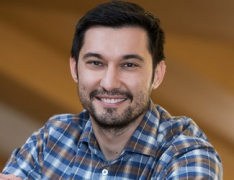– Europe/Lisbon
Online

Computational Imaging: Reconciling Physical and Learned Models
Computational imaging is a rapidly growing area that seeks to enhance the capabilities of imaging instruments by viewing imaging as an inverse problem. There are currently two distinct approaches for designing computational imaging methods: model-based and learning-based. Model-based methods leverage analytical signal properties and often come with theoretical guarantees and insights. Learning-based methods leverage data-driven representations for best empirical performance through training on large datasets. This talk presents Regularization by Artifact Removal (RARE), as a framework for reconciling both viewpoints by providing a learning-based extension to the classical theory. RARE relies on pre-trained “artifact-removing deep neural nets” for infusing learned prior knowledge into an inverse problem, while maintaining a clear separation between the prior and physics-based acquisition model. Our results indicate that RARE can achieve state-of-the-art performance in different computational imaging tasks, while also being amenable to rigorous theoretical analysis. We will focus on the applications of RARE in biomedical imaging, including magnetic resonance and tomographic imaging.
This talk will be based on the following references
J. Liu, Y. Sun, C. Eldeniz, W. Gan, H. An, and U. S. Kamilov, “RARE: Image Reconstruction using Deep Priors Learned without Ground Truth,” IEEE J. Sel. Topics Signal Process., vol. 14, no. 6, pp. 1088-1099, October 2020.
Z. Wu, Y. Sun, A. Matlock, J. Liu, L. Tian, and U. S. Kamilov, “SIMBA: Scalable Inversion in Optical Tomography using Deep Denoising Priors,” IEEE J. Sel. Topics Signal Process., vol. 14, no. 6, pp. 1163-1175, October 2020.
J. Liu, Y. Sun, W. Gan, X. Xu, B. Wohlberg, and U. S. Kamilov, “SGD-Net: Efficient Model-Based Deep Learning with Theoretical Guarantees,” IEEE Trans. Comput. Imag., in press.